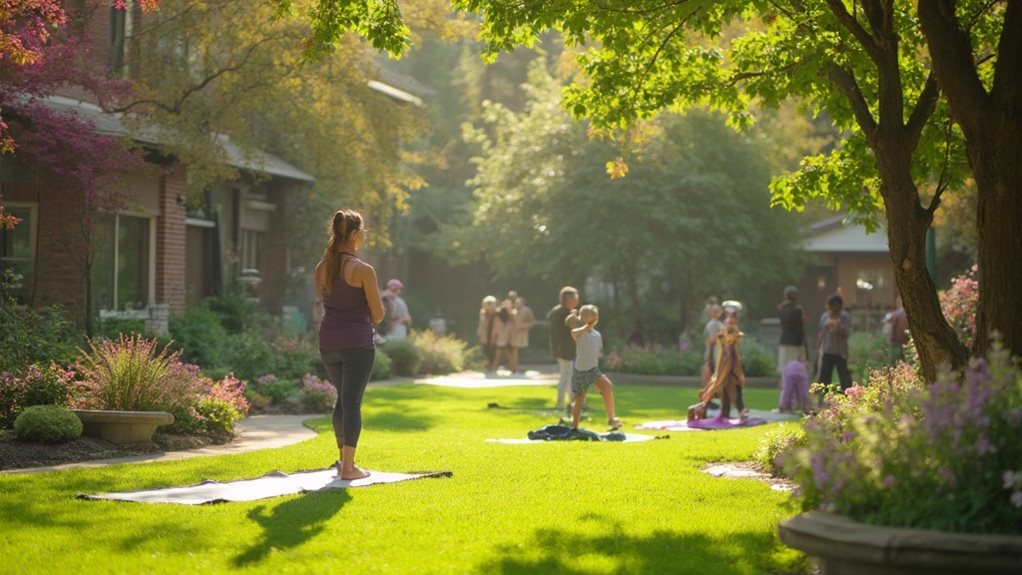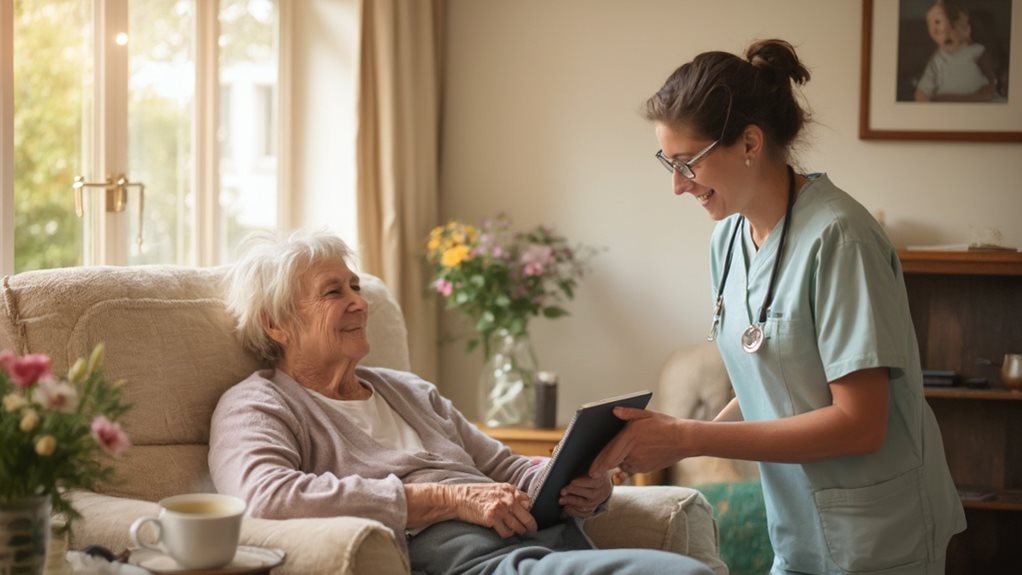Fitness and wellness programmes in elder care give your loved ones better, healthier lives. We focus on simple, effective exercises like walking, yoga, and water aerobics to keep seniors strong and alert. Our programmes help reduce falls while building friendships and improving mood.
We design activities that fit naturally into daily life, considering each person's abilities and goals. Regular checks help us adjust plans to keep your family members active and interested. Through smart exercise planning, we help seniors stay independent longer.
Our approach makes staying active easy and fun, with activities matched to each person's needs. We've seen how these programmes bring positive changes, helping seniors maintain their independence and zest for life through regular, enjoyable movement.
Key Takeaways
We create personalised exercise plans that improve your mobility, strength and balance while considering your health needs and preferences.
Our group fitness activities, including yoga and water aerobics, help you connect with others and improve your mental wellness.
Your participation in our wellness programmes reduces healthcare costs by improving physical health, managing ongoing conditions and strengthening immune systems.
We monitor your progress in physical fitness, mental health and social activities to keep track of what works best for you.
Making fitness part of your daily routine helps you stay active, independent and committed to healthy habits for the long term.
Our programmes bring together the best of fitness and wellness care to help you live a healthier, more active life as you age.
Benefits of Senior Fitness Programs
Senior fitness activities provide real physical and mental benefits for your everyday life. You'll gain better strength, heart health, and steadier balance, which means fewer risks of falling. Regular exercise lifts your mood and keeps your mind sharp. When we join these activities, we can better handle ongoing health issues, build up our immune defences, and rest better at night. Taking part in senior fitness helps you stay active and independent longer. Social interaction through these programs also enhances mental and emotional well-being.
Designing Tailored Exercise Plans
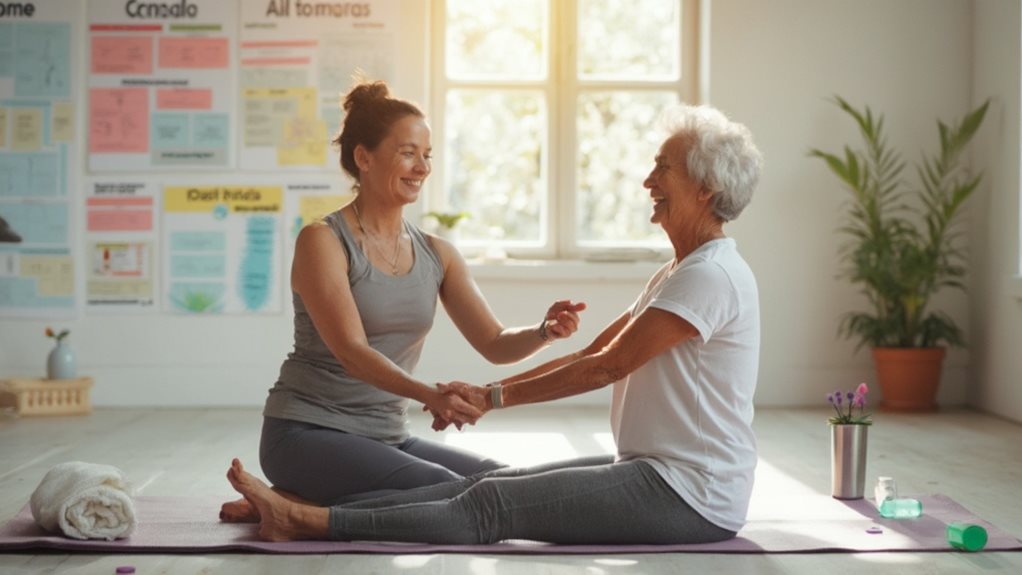
Creating Your Perfect Exercise Plan
We design exercise plans for seniors by starting with your personal health assessment. Our focus is on checking your movement, strength and balance, plus any health conditions you may have. Working closely with you helps us create activities you'll enjoy and can do safely. We check in often to make updates based on your progress. With the right equipment and support, you'll meet your fitness goals at your own pace. We keep everything simple and comfortable, making exercise an enjoyable part of your daily routine. Our programs are designed to be inclusive and adaptable, ensuring all residents can participate and benefit.
Examples of Senior Exercise Activities
Let's look at senior exercise activities that work well for you.
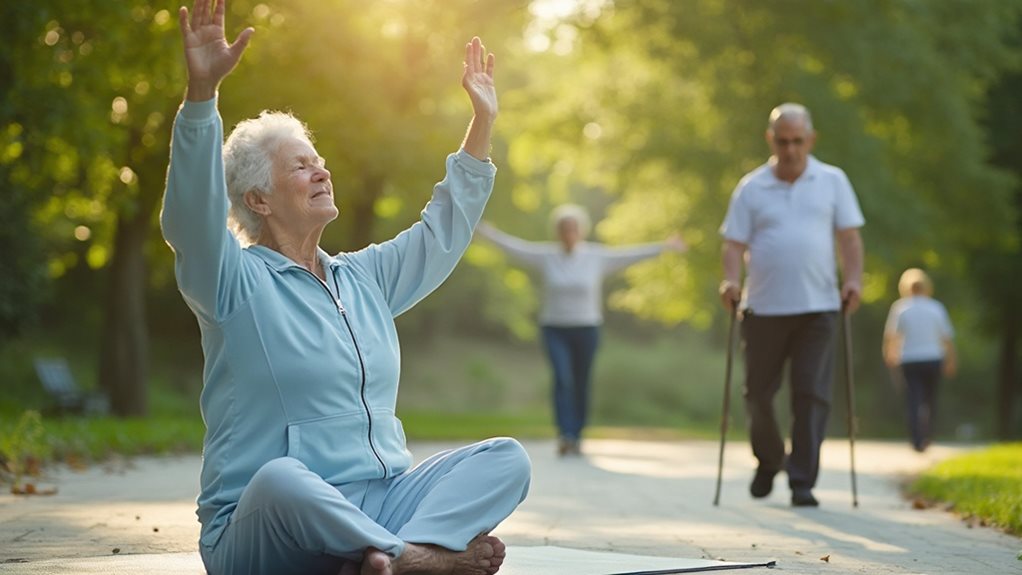
Walking at a good pace, yoga, and tai chi help you stay mobile and steady on your feet. When you want gentle heart-healthy movement, try water aerobics or jogging in the pool. If you prefer sitting exercises, seated yoga and leg extensions build your flexibility and muscle strength. We find many seniors enjoy group classes like EnhanceFitness and SAIL – they're great for staying fit while meeting others. Regular exercise also helps manage age-related conditions and improves overall quality of life.
Strategies for Wellness Implementation
We design wellness plans for your care home that put each resident first and create a positive setting for better health. Healthy lifestyle boosts quality of life, reducing healthcare costs and supporting a thriving lifestyle.
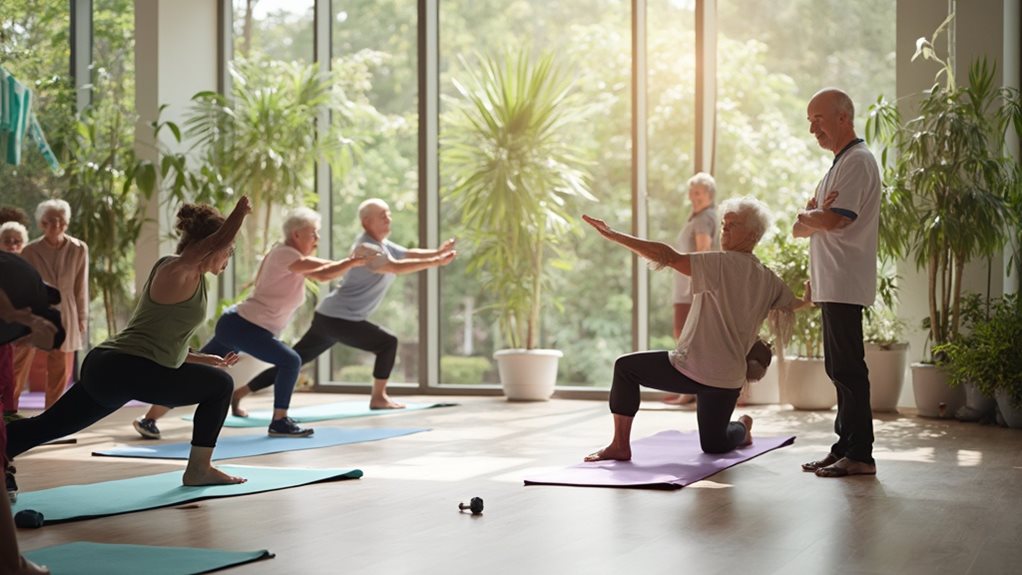
- Match Each Person: Check what residents can do and what health issues they have before making their exercise plans.
- Keep Spirits High: Play music, give praise, and celebrate progress to keep everyone taking part.
- Stay Protected: Set up spaces with the right kit where people can move about easily.
- Make it Normal: Get staff and other residents to cheer on daily exercise.
Overcoming Common Challenges
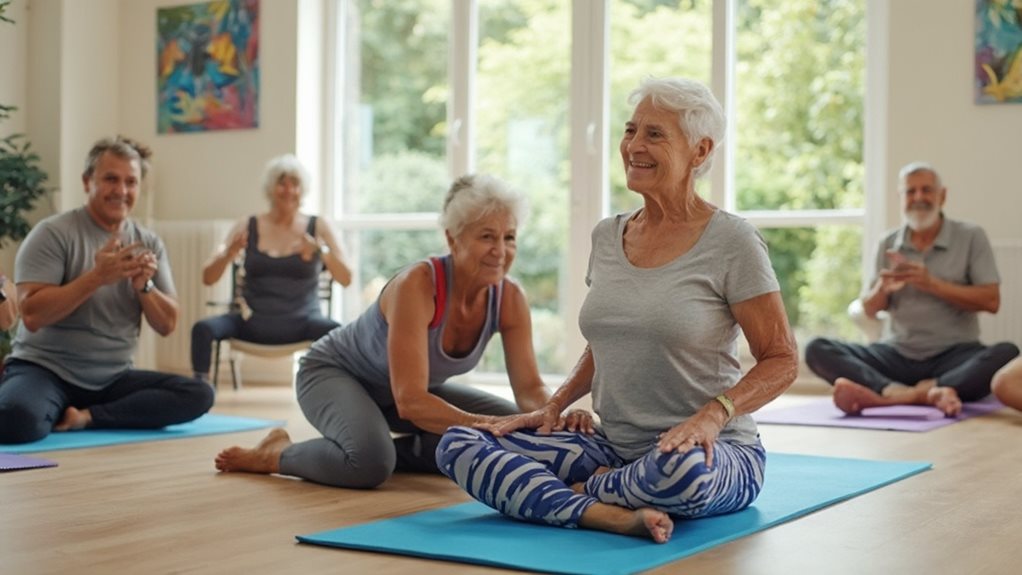
Let's Fix Access Problems
We make your workout spaces safer and easier to use by adding proper lighting, grip rails and equipment you can use while sitting. Our programmes work for different health needs – with gentle exercises that keep you moving without causing pain. Making fitness work for you is our goal, so you'll find the right way to stay active, no matter your situation.
Addressing Accessibility Issues
Making Fitness Accessible for Seniors
We make it simple for seniors to join and benefit from our fitness programmes. Here's what we do:
- Get the right kit – We choose easy-to-use equipment like height-adjustable benches and arm bikes to suit your needs.
- Support your progress – Our team learns how to keep you safe and creates workout plans that match your abilities.
- Make it easy to join in – We offer online classes and mobile apps so you can exercise from home.
- Create better spaces – We organise our centres with wide, clear paths and handy facilities, making it straightforward for you to start and stick with your fitness routine.
Tailoring for Health Conditions
Meeting Your Health Needs
We adapt fitness plans to your specific health requirements, making sure you can exercise safely and get real benefits. Our programme includes gentle cardio for your heart, pool exercises if you have joint pain, and special breathing work for lung health. By matching activities to your movement range and supporting your mental wellness, we help you stay active and happy in ways that work for you.
Measuring Program Effectiveness
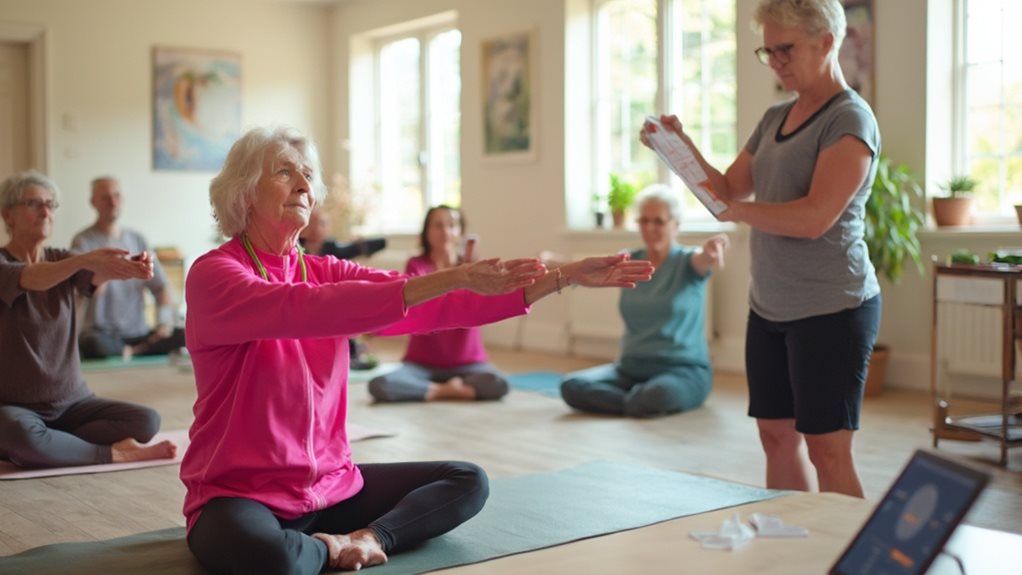
How We Measure Program Success in Elder Care Fitness
We measure your fitness and wellness programs through clear targets and results:
- Physical Progress: Our team records your strength, flexibility and heart health through simple tests like the 6-minute walk.
- Mental Health: We check your mood and wellbeing using trusted tools such as the Geriatric Depression Scale.
- Community: We track how often you join in and connect with others.
- Long-term Benefits: We look at how many people stay with our programs and whether they offer good value for money.
This straightforward approach helps us see what works for you and where we can improve. Regular checks mean we can adjust your program when needed.
Frequently Asked Questions
Are Family Members Allowed to Join the Fitness Programs?
Yes! Family members can join our fitness programmes.
We welcome your family to work out with you. Your loved ones can exercise alongside you, which helps everyone stay motivated and support each other. Training together creates stronger family bonds while helping everyone get fit. It's a win-win that makes fitness more fun and keeps everyone coming back.
What Is the Cost of Participating in These Wellness Programs?
Our wellness programme costs are straightforward. Monthly fees range between £3-£7.50 per person, with yearly costs from £150-£1,200. You'll find these rates cost-effective for the health benefits you receive. Our simple pricing structure helps you plan your wellness budget with confidence.
Can Residents With Dementia Participate in Exercise Activities?
Yes, residents with dementia can and should exercise. Regular movement benefits their physical and mental health. We've created exercise programmes that help build strength, support brain function, and bring social connection and happiness. Our activities match your loved one's abilities, making exercise both safe and enjoyable.
Are There Programs Available During Evenings or Weekends?
Yes, we offer evening and weekend activities. Many of our programmes run outside standard hours, making them easy to fit into your schedule. You'll find fitness classes, social groups, and health activities at times that work best for you and your family members.
How Do I Enroll a Loved One in These Fitness Programs?
We'll help you register your loved one right away. Research shows over 70% of seniors see better mobility after joining these programmes. First, we'll check your family member's insurance coverage, then match them with suitable options like SilverSneakers. Simply bring their ID and insurance information, and we can sign them up either online or at our centre.

